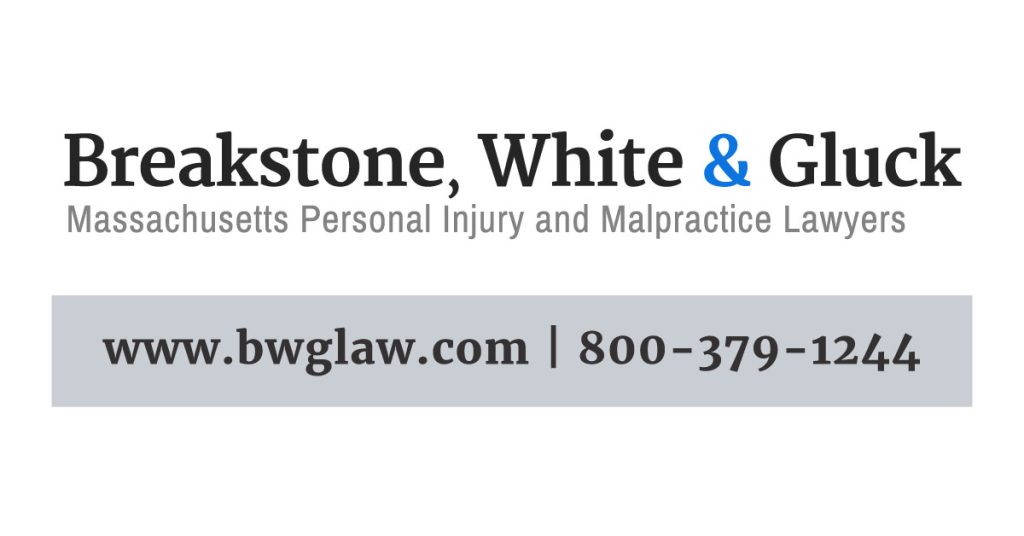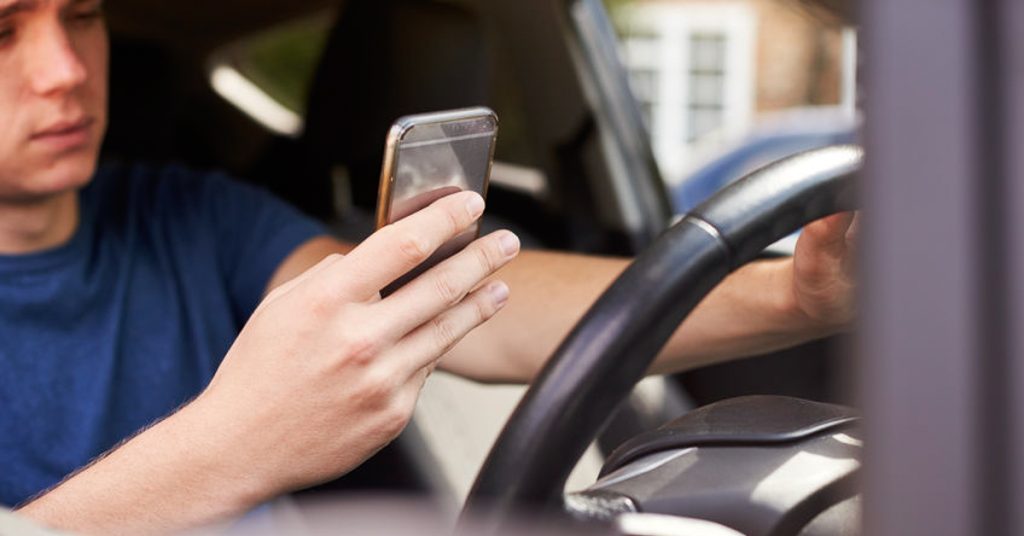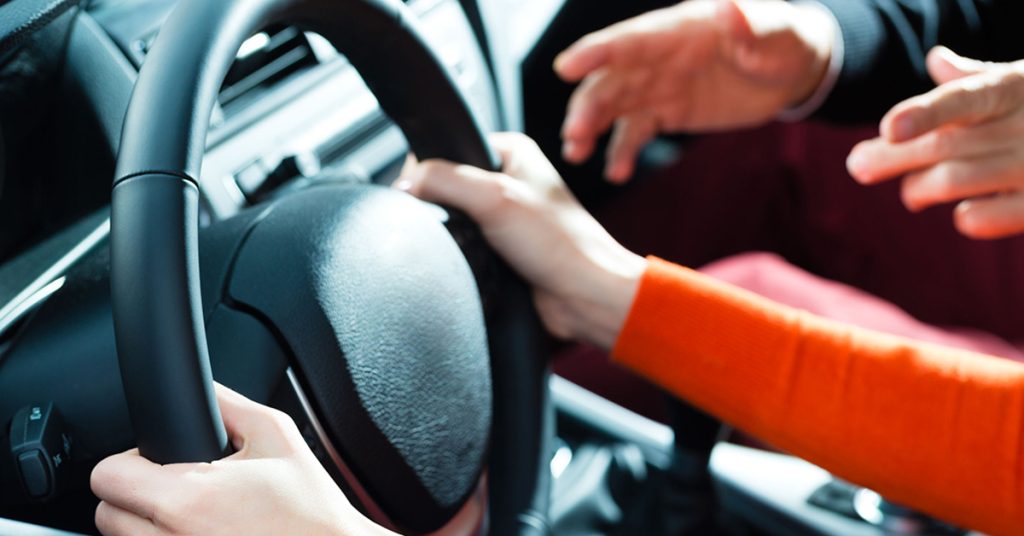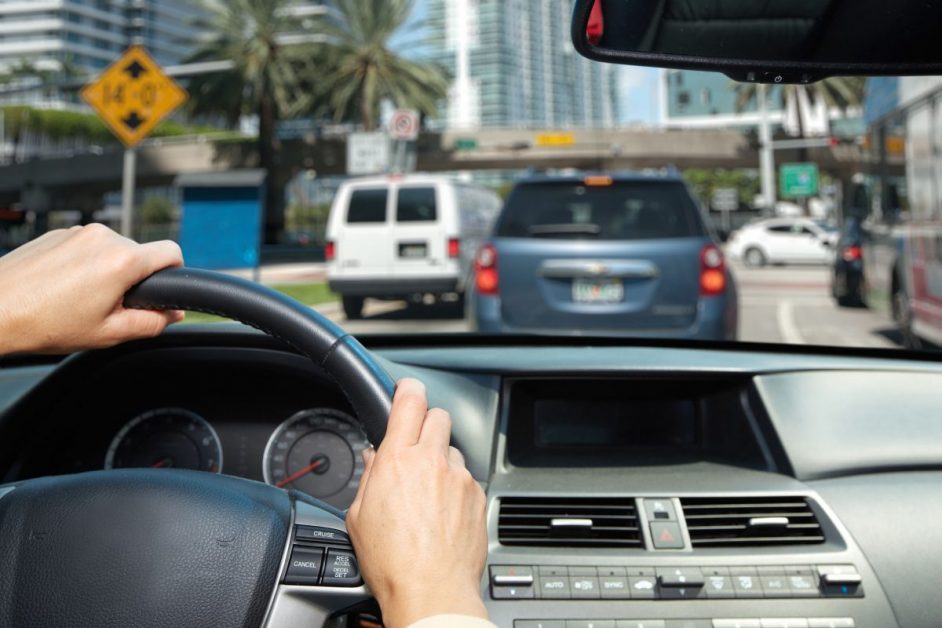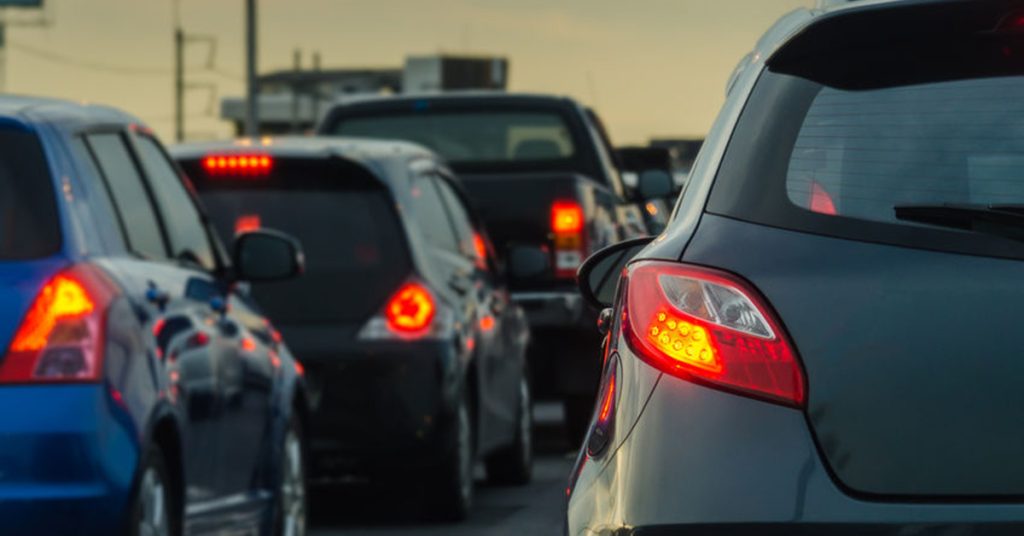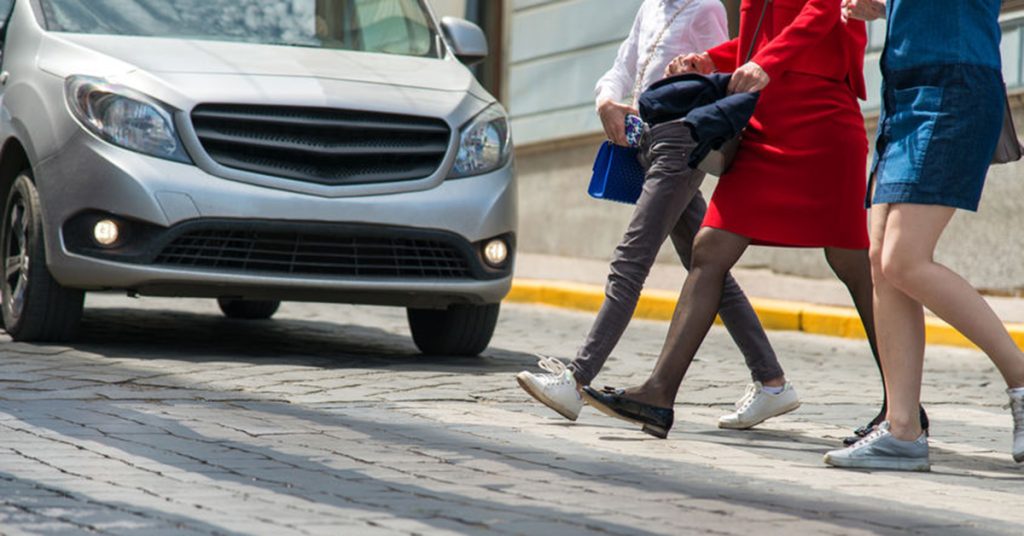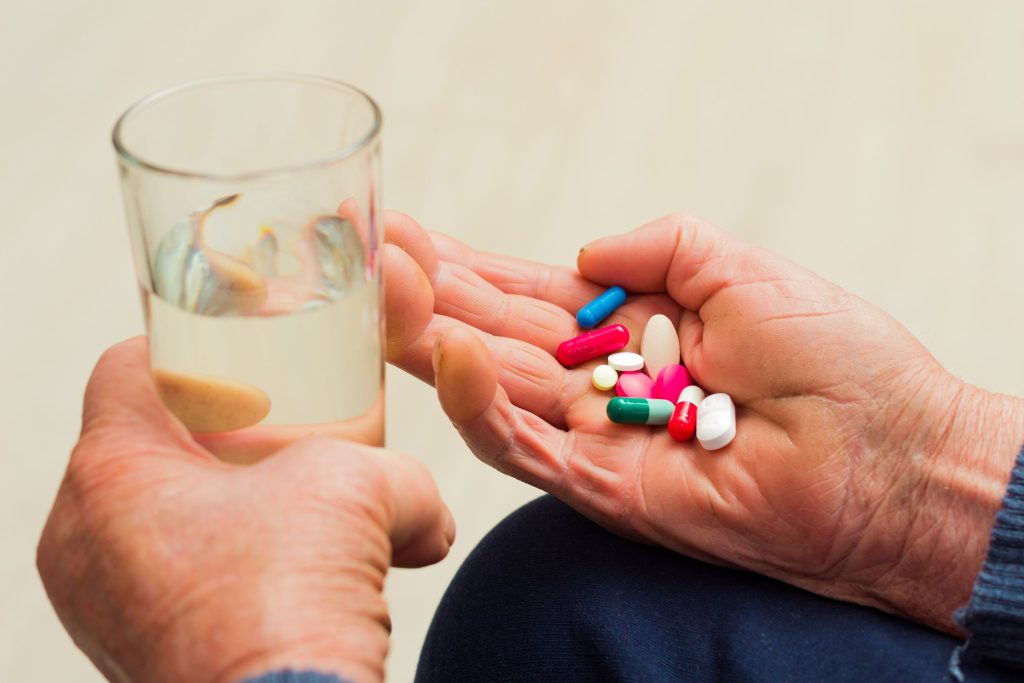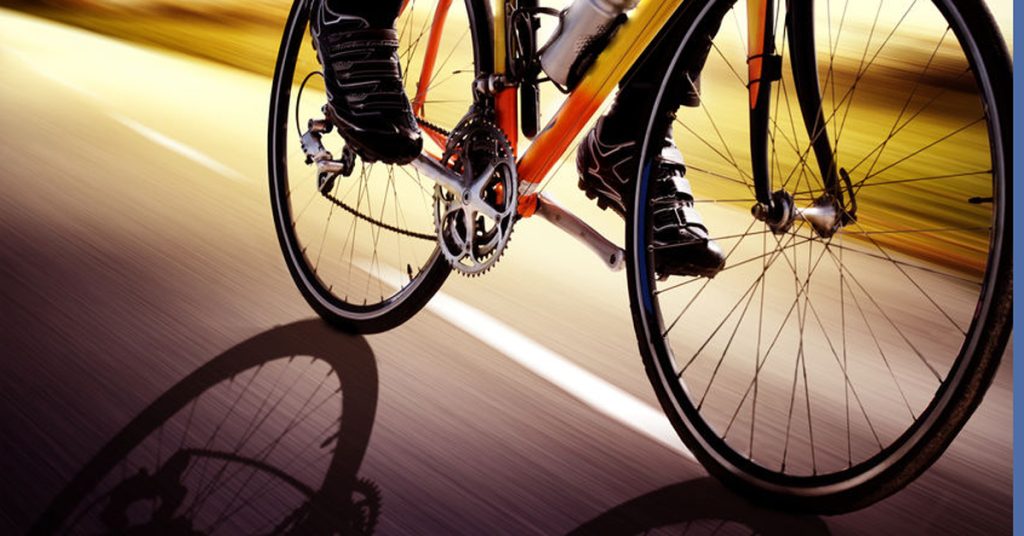Negligence
FDA Warns Public About Dangerous Hand Sanitizers
In Massachusetts, we are washing our hands and using hand sanitizers as much as we can. We all want to do our part to prevent the spread of COVID-19. But now, it’s time to check your supply of sanitizer. The Food and Drug Administration (FDA) is urging the public to steer clear of nine brands because they contain methanol, a toxic substance.
Methanol is often used in industrial settings, where high concentrations of methanol vapor can lead to poisoning, according to the Centers for Disease Control and Prevention (CDC). It is also called wood alcohol and is highly flammable.
Methanol can also be harmful when you handle it or absorb it through your skin, according to the FDA. The greater risk, though, is children or adolescents who may drink or ingest hand sanitizer. Certain adults may also be at risk or may have consumed the clear liquid accidentally. Parents and caregivers should respond immediately if they suspect a methanol hand sanitizer poisoning.
The hand sanitizers identified by the FDA show particularly high levels of methanol. Testing found one product contacted 81 percent methanol and no ethanol.
The FDA had asked Eskbiochem SA de CV of Mexico to remove the hand sanitizers from the market last week. When there was no response, the FDA issued its public warning on Friday (June 19, 2020).
The FDA advises consumers to avoid these hand sanitizers:
- All-Clean Hand Sanitizer (NDC: 74589-002-01)
- Esk Biochem Hand Sanitizer (NDC: 74589-007-01)
- CleanCare NoGerm Advanced Hand Sanitizer 75% Alcohol (NDC: 74589-008-04)
- Lavar 70 Gel Hand Sanitizer (NDC: 74589-006-01)
- The Good Gel Antibacterial Gel Hand Sanitizer (NDC: 74589-010-10)
- CleanCare NoGerm Advanced Hand Sanitizer 80% Alcohol (NDC: 74589-005-03)
- CleanCare NoGerm Advanced Hand Sanitizer 75% Alcohol (NDC: 74589-009-01)
- CleanCare NoGerm Advanced Hand Sanitizer 80% Alcohol (NDC: 74589-003-01)
- Saniderm Advanced Hand Sanitizer (NDC: 74589-001-01)
The agency advised consumers to carefully inspect sanitizers in their home before use and immediately dispose of these in appropriate hazardous waste containers. Consumers should not flush sanitizer or pour it down the drain. Read the FDA notice.
Symptoms of Methanol Poisoning
Methanol exposure can lead to methanol poisoning and severe symptoms, starting with nausea, vomiting, headache and blurred vision. In the worst cases, those exposed can suffer permanent blindness, seizures, comas or permanent damage to the nervous system. Methanol poisoning can also result in death.
How Safe is Your Hand Sanitizer?
Hand sanitizer was in short supply for months. But you can now probably find your own bottle. If you use hand sanitizer, make a point to carry your own. Carefully read the label and regularly check the FDA website for recalls.
Hand sanitizer is a clear gel. It all looks the same, but each brand has a different alcohol content. For instance, your small pocket sanitizer probably has less alcohol than a nursing home or hospital, which has to meet greater fire safety regulations.
Our point is it would be hard to tell if you were being offered sanitizer with a high level of methanol or any dangerous substance. It’s better to control your own supply. Read about the FDA’s work to ensure the safety of hand sanitizers.
Wash Your Hands Safely
The FDA reminds consumers to regularly wash their hands often with soap and water for at least 20 seconds. When soap and water are unavailable, the CDC recommends an alcohol-based hand sanitizer which contains at least 60 percent ethanol. Visit the FDA’s website to learn more about hand sanitizer safety.
Free Legal Consultation – Boston Personal Injury Lawyers
Breakstone, White & Gluck has extensive experience representing those injured by defective products, including those which contain toxic chemical substances.
Manufacturers of cleaning supplies, hand sanitizers and detergents have a responsibility to produce safe products and conduct thorough testing before distribution. End users, including restaurants, industrial workplaces and labs, also have a responsibility to follow safety guidelines when using chemical products. Mishandling chemicals can lead to chemical exposure, fires or serving clients unsafe food and beverages.
If you have been injured by a chemical exposure or explosion, learn your legal rights. For a free legal consultation, contact Breakstone, White & Gluck at 800-379-1244 or 617-723-7676. You can also use our contact form.
Distracted Driving Laws Are Saving Teen Lives, Research Says
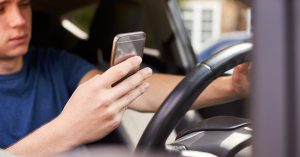
Distracted driving laws are reducing teen driver crashes, study says.
When drivers use cell phones, they introduce grave dangers to the road and are more likely to crash. This is why many states have now passed distracted driving laws. But how effective have these laws been?
Highly effective, suggests new research. Distracted driving laws are saving the lives of both teen drivers and their passengers in car crashes. The greatest impact is seen when states ban all drivers from cell phone use, not just junior operators under age 18.
Researchers at Massachusetts General Hospital published the findings from a 10-year study in Pediatrics journal. Reviewing more than 38,000 motor vehicle crashes reported between 2007 and 2017, researchers found a significant decrease in fatal motor vehicle crashes among drivers age 16-19.
There was actually a 43 percent reduction in deaths among 16-year-old drivers in states which passed hand held cell phone bans for all drivers (not just a ban for junior operators under 18).
Researchers had the challenge of working with evolving cell phone laws. When the study began in 2007, just 15 states had passed one type of distracted driving law, often a texting while driving ban. By the end, researchers were reviewing the impact of multiple bans, including texting while driving bans (both primary and secondary), hand-held bans and bans on all types of cell phone use for drivers under age 18.
Distracted Driving In Massachusetts
Massachusetts distracted driving crashes are a serious concern, having caused the deaths of drivers as well as pedestrians and cyclists. Once drivers pick up a cell phone, it is hard to break their attention away. The younger the driver, the harder it can be and this makes it essential for teens to establish good habits from the start.
In Massachusetts, a high school student was the first to be criminally prosecuted for motor vehicle homicide, texting while driving and negligent operation of a motor vehicle, according to CNN. Police allege the 17-year-old Haverhill man exchanged nearly 200 text messages in the hours leading up to the fatal crash in 2011. The crash killed a 55-year-old New Hampshire driver and seriously injured his girlfriend, who was riding in his passenger seat. As the prosecutor said at sentencing, “there are no winners today.” He went onto say, “…in a split second, many lives are forever changed.”
The state of Massachusetts reported a 170 percent increase in distracted driving crashes between 2014 and 2016. Over the past few years, lawmakers and safety advocates negotiated proposals to pass a hands-free law or a ban on handheld cell phone use. This finally reached resolution in November 2019, taking effect in April.
Under the Massachusetts Hands-Free Law, drivers are no longer allowed to use hand-held cell phones. They must now use voice-activated technology. The goal is to reduce injuries by taking away the act of reaching for a phone and attempting to dial. However drivers must still use voice-activated cell phones cautiously. Drivers can still cause accidents when using voice-activated technology and can still be held liable if they cause someone’s injuries.
Teen drivers – Massachusetts junior operators under age 18 – are still not allowed to use hands-free cell phones under the new law.
Free Legal Consultation – Boston Car Accident Attorneys
At Breakstone, White & Gluck, our attorneys fight for the rights of those injured by negligent driving in Boston and across Massachusetts. With more than 100 years combined experience, we have a reputation for strong results for victims of car accidents, truck crashes and bus collisions.
If you have been injured, call our attorneys for a free legal consultation: 800-379-1244 or 617-723-7676 or use our contact form.
Study: Teen Driving Accidents Claim More Than 7 Lives Each Day of Summer
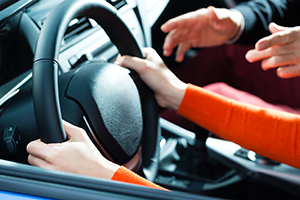 We know many Massachusetts parents regularly talk to their teens about safe driving to prevent car accidents. You should be commended for engaging in this often-stressful conversation.
We know many Massachusetts parents regularly talk to their teens about safe driving to prevent car accidents. You should be commended for engaging in this often-stressful conversation.
We urge you to continue on this summer. Helping teens understand the difference between appropriate and unsafe choices and build strong driving skills is a life-long investment in their safety and the safety of others.
Nationwide, teen driving crashes killed more than seven people each day of summer from 2008 to 2018, according to AAA Foundation for Traffic Safety. AAA recently released the 2020 “100 Deadliest Days” of driving report, once again warning teen drivers and parent to take extra precautions between Memorial Day and Labor Day.
Be aware of the unique risks this summer, AAA says. In response to the COVID-19 pandemic, many summer jobs and activities have been cancelled. With more free time, teens may be driving more. AAA urges parents to read its 2020 “100 Deadliest Days” report, and its Parent Coaching Guide, and to have teens sign a safe driving agreement. With this approach, parents can set clear expectations for teens and refer them to the agreement should they forget. If teens violate the terms of the agreement, they may lose driving privileges for a period of time.
Research on Teen Driving Crashes
Here are a few figures for parents to consider. AAA’s research found more than 70 percent of teen drivers age 16-18 had engaged in unsafe and illegal driving behaviors.
Seat belt Use
17 percent of teen drivers admitted to not wearing a seat belt.
Speeding
47 percent of teen drivers admitted to driving 10 mph over the speed limit on a residential street.
40 percent of teen drivers admitted to driving 15 mph on a freeway.
Texting and Cell Phone Use
35 percent of teen drivers admitted to texting while driving.
Other Driving Violations
More than 30 percent of teen drivers admitted to running red lights and aggressive driving. Meanwhile, 25 percent of teen drivers admitted to drowsy driving.
Parents can influence teens on some of these behaviors by developing a teen driving agreement (there are several available on the Teen Driver Source website). Your conversations with your teens are also essential.
Help Your Teen Drive Safely
Help your teen drive safely and avoid a car crash.
Many states have graduated licensing laws, including Massachusetts. Encourage your teen to follow the Massachusetts Junior Operator Law at all times. Under this law, teens are not allowed to use cell phones when driving in Massachusetts, not even under the new Massachusetts “hands-free” driving laws.
When they have a question, encourage them to ask, review their driver’s education materials or the Massachusetts Driver’s Manual. When drivers understand the law, they are more confident making decisions on the road.
Another opportunity is to drive together. Take turns in the driver seat. When you drive, take the opportunity to show your teen how you follow the speed limit. On a 30 mph street, this means driving 30 mph or less, not 35 or 40 mph. Tell your teen what you are doing and why.
Speed-related crashes are prevalent among teens. Simply slowing down and following other vehicles at greater distances can make a tremendous impact in reducing car accidents. At slower speeds, your teen has more time to stop and if they have a collision, injuries are likely to be less severe. Accident victims are more likely to survive a teen driving accident.
At the same time, parents should understand that when teens speed, they may be intentionally speeding and risk-taking. This is unacceptable. But often, the reason is driver inexperience. Teens need more practice using the gas and brakes, and you may need to explain that traveling “just” 5 mph or 10 mph over the speed limit is dangerous. In fact, you may need to do this a few times, also explaining that teens are more likely to cause injury when they speed and receive a speeding ticket which will impact their junior license.
To help your teen, be patient. Your goal is to demonstrate safe driving techniques and give them feedback when they make a good decision or make a mistake. Yet, if you are too critical, you will make your teen nervous and reluctant to drive with you. Tread lightly but firmly. It’s alright to take a break, but don’t stop trying.
Free Legal Consultation – Boston Car Accident Lawyers
At Breakstone, White & Gluck, our Boston car accident attorneys represent those who have been injured by negligent driving in Massachusetts. Car accidents often result in serious and catastrophic injuries, including head injuries, spinal cord injuries, broken bones, lacerations and death. When victims survive, they may require medical care, have to take time off from work and suffer other financial losses.
Always learn your legal rights after an injury. For a free legal consultation, call our car accident attorneys at 800-379-1244 or 617-723-7676. You can also use our contact form.
More Than Half of All Car Crashes Happen in Intersections
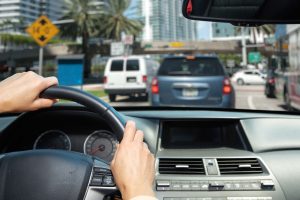
Practicing safety at Massachusetts intersections.
If you traveled to Cape Cod or the North Shore this Memorial Day weekend, you most likely crossed many intersections and maybe a few rotaries.
Our Boston car accident attorneys want to take a moment and write about traveling safely through Massachusetts intersections. This is a fundamental, one of the first lessons for student drivers. Yet the reality is, more than 50 percent of all traffic crashes resulting in injuries or death occur in or near intersections, according to the U.S. Federal Highway Administration.
Intersections can be challenging. Drivers can make mistakes. Large trucks can take wide turns, causing serious accidents. And some intersections need improvements.
But often, accidents happen when drivers stop at traffic signals and just stop paying attention to the road. They may be fatigued; their thoughts may wander elsewhere. When traffic starts moving again, the driver may step on the gas without checking for pedestrians, cyclists or traffic around them.
Then there are outright reckless actions. Unfortunately, these endanger everyone in the intersection. These drivers are aggressive and may speed or drink and drive. These drivers may be cited for speeding and other traffic violations, but they can also be criminally charged for their actions. When a driver causes personal injury or death in Massachusetts, they may also be held liable for the victim’s injuries.
Massachusetts Laws for Driving Through Intersections
Travel Slowly. As a driver, always travel slow enough to stop or yield to pedestrians, cyclists and other vehicles. You also have to remember other bystanders on sidewalks, such as foot traffic from restaurants and shops. Be prepared for them to make an unexpected move.
Right of Way at Intersections. As a driver, you must understand when you have the right of way and when you have to yield in intersections. You can find some of the rules contained in M.G.L c. 89 § 8. As for right of way, when two vehicles arrive at an intersection at the same time, the driver on the left shall yield the right-of-way to the vehicle on the right.
Drivers must also yield to other vehicles before turning left. When stopped at a steady red light, drivers can make either a right turn or on a one-way street, they can make a left turn to another one way street. They must yield the right-of-way to pedestrians and other traffic as directed by the traffic signal.
Yielding to Cyclists. Drivers may only turn right if they can do so at a “safe distance from the bicyclist at a speed that is reasonable and proper,” according to M.G.L. c 90 § 14.
When drivers turn right near cyclists, there is a high risk for a right hook crash. As best practice, before making a right turn, drivers should fully check around their vehicle, including behind. They should make use of their rearview and sideview mirrors.
If there is a cyclist, they are most likely to be in the bike lane to your right (though in Massachusetts, cyclists are also allowed to travel in the traffic lane in front or behind you). Yield to them and let them turn right first. You want to keep the cyclist well ahead of you. Then travel slowly because there may be other cyclists nearby.
When drivers turn left, conditions are different. Drivers are most likely to encounter a cyclist coming from another direction. They can avoid a bicycle crash by continuing to scan the intersection and waiting until there are no cyclists.
Yielding to Pedestrians. Pedestrians are safest at intersections marked with crosswalks and traffic signals, which provide “Walk” lights. Drivers must stop at these traffic signals. M.G.L. c 89 § 11.
The best way to avoid a pedestrian accident is to stay well behind the crosswalk line and stay alert throughout the light. Do not check your cell phone, even in hands-free mode.
Put Down Your Cell Phone. Under the new Massachusetts hands-free law – or M.G.L. c 90 § 13B – drivers are not allowed to pick up their cell phones, including at stop signs or traffic signals. Drivers are allowed to use voice-activated technology, but we urge you to set your cell phone and all in-car systems aside. Let calls go to voicemail. Instead, use this time to check traffic conditions around you and get ready for the green light.
Read your Massachusetts Driver’s Manual. While this won’t make your summer reading list, the Massachusetts Driver’s Manual is available online. As a Massachusetts driver, you can access this anytime you have a question. We suggest reading page 111, which explains the Dutch Reach method for safety near cyclists and how to prevent a dooring injury to a cyclist. This is worth noting because cyclists and pedestrians may be traveling in different areas over the next few months as Massachusetts recovers from COVID-19.
About Breakstone, White & Gluck
Since 1992, our Boston car accident lawyers have represented victims of negligent or reckless driving, helping them recover financial compensation for injuries, lost wages, pain and suffering and other damages. We represent those injured in the Boston region, including in Boston, Cambridge, Somerville, Everett, Lynn, Quincy, Newton and Watertown. We also represent clients injured in Cape Cod car accidents.
For a free legal consultation, contact Breakstone, White & Gluck at 800-379-1244 or 627-723-7676. You can also use our contact form.
Keeping Your Massachusetts Auto Insurance Policy in Good Standing During COVID-19 Emergency
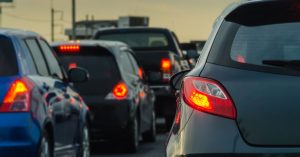
Save yourself time and frustration. Our tips for keeping your Massachusetts auto insurance policy in good standing during the COVID-19 state of emergency.
Be proactive and keep your auto insurance policy in good standing during the COVID-19 emergency. When you move or cannot make payment, let your auto insurer know in advance. This will save you a great deal of time, frustration and money during an already stressful time.
First, some news on a small savings. Due to a decrease in driving, many insurers have committed to giving Massachusetts drivers a 15 percent discount for April and May (roughly $30 in savings on a $1,200 policy), according to The Boston Globe. Not a large savings, but you don’t have to be proactive here. Just look for the credit to appear on your premium statements or a rebate check to arrive in the mail.
How Auto Insurance Works For You
Auto insurance is a critical tool in protecting yourself and your family from injury and major financial loss in a car accident or truck crash. If you were negligent in a car crash, you need to have coverage to financially compensate any victims for their medical expenses and other losses. This protects your other financial assets.
When another driver is at fault and causes your injuries, you should be entitled to seek compensation from their auto insurance policy. What’s unfair is this coverage may not be available if the driver is uninsured or is underinsured and has only purchased the state’s minimum requirement for compulsory coverage.
Many drivers should also purchase optional coverages to protect themselves. Read more in our article, “Understanding and Buying Massachusetts Car Insurance.”
Keep Current with Auto Insurance Billing
If you are unable to pay your auto insurance premium, notify your insurance agent or insurer in advance of your payment date. Auto insurers have the right to cancel your policy for non-payment and they can do so in short time. This can lead to extra fees and take up a lot of your time. The worst scenario is if you are stopped by a police officer when your auto insurance has lapsed. You could be fined and your license could be suspended, adding another layer of time and frustration.
Avoid this stress. Call your insurer and request a payment extension. The Massachusetts Department of Insurance has advised insurers “to work with consumers to be flexible and make every possible effort to avoid policy cancellation.” Read this advisory.
And if you don’t have electronic access to your auto insurance policy, ask about setting it up now so you can monitor your account.
Update Your Address
The Massachusetts Department of Insurance calls this “the single most important thing you can do to protect yourself from a claim denial.” Your insurer sets your premium in part based on your address and the risk of collision there. If you don’t update your address, your insurer may still pay claims for your compulsory coverage. Very likely they will deny claims for your optional coverages.
If you have moved or returned home from college, notify your insurer that you have changed your address and are garaging your vehicle in a different location. Your insurance company may (or may not) provide you with some leeway up to 30 days. Regardless, update your policy immediately. You also have an obligation to update your motor vehicle registration and license and you can do this online.
Don’t own a car? Remind your family members to add you back to their policy.
Reconsider Your Coverages
As Massachusetts looks to reopen, some workers will telecommute. Still, we urge you not to reduce your auto insurance coverages to save money. Not yet. But start a conversation with your auto insurance agent about your current coverages and if they meet your needs.
Start by asking about your optional coverages. Specifically, do you have enough MedPay coverage? And do you need more underinsured and uninsured coverage? A note, if you can only raise one, purchase more MedPay, which will help pay your medical bills. For a few dollars, you can increase your coverage by $10,000 or more and this makes a big difference). Then consider raising your underinsured and uninsured coverages as well. If you do, make sure you purchase the same amount of bodily injury coverage.
If you are spending more time on a bicycle, we urge you to wear a helmet first and foremost. You will also benefit by adding auto insurance coverages to help with your medical expenses and other losses. You may be able to add coverages to your own auto insurance policy or to a household policy. Read our article, “What Every Massachusetts Bicyclist Needs to Know About Car Insurance.”
Going forward, if you transition to working at home more, monitor your mileage. You may be able to request a low mileage discount and save money without losing any coverage.
Also, consult your insurance agent if you begin driving as part of a new job or as an independent contractor for a restaurant or business. If you are in a car accident while making work deliveries, your private passenger auto insurance policy will not cover you.
The Massachusetts Department of Insurance advises drivers and businesses to ask their insurers about endorsements for delivery drivers during the Massachusetts COVID-19 state of emergency. Read the state’s advisory, “Insurance FAQs During COVID-19 Public Health Crisis.”
About Breakstone, White & Gluck – Boston Car Crash Lawyers
Breakstone, White & Gluck is consistently recognized as a top-rated personal injury law firm in Boston. With more than 100 years combined experience, our attorneys have assisted thousands of car accident victims in Boston, Cambridge, Quincy and across Massachusetts. We have a track record of successful results covering nearly 30 years.
For a free legal consultation, contact Breakstone, White & Gluck at 800-379-1244 or 617-723-7676. You can also use our contact form.
In Massachusetts, Less Traffic Congestion, But Drivers are Speeding Dangerously Down Open Roads
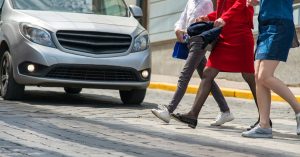
In Massachusetts, traffic is lighter during the COVID-19 emergency, but drivers are being warned to slow down.
During the COVID-19 emergency, Massachusetts residents are getting an unprecedented look at life without traffic congestion. With fewer cars out, there have been fewer accidents. But the drivers who are out have been speeding down open streets. State transportation officials say the high speeds are contributing to traffic fatalities.
The rate of traffic fatalities doubled in April, when traffic dropped by 50 percent on some highways, according the Massachusetts Department of Transportation (or MassDOT). The Boston Globe reported that 28 people died in April, compared to 27 during April 2019, when there was no disruption to traffic.
Speeding and distracted driving have contributed to fatal accidents. According to MassDOT, the fatal crashes resulted in the deaths of drivers, passengers, two motorcyclists and three pedestrians. In Boston, a cyclist was killed by a large truck near Massachusetts and Harrison avenues.
In Boston, Mayor Marty Walsh urged drivers to slow down during his briefing last week. News briefing posted May 1.
“With less traffic, what we’re starting to see is increased speed,” Walsh said. “So the crashes that do happen have been more severe due to the high speed impacts. Even an increase of four to five miles per hour can make a big difference in terms of injuries and possible death.”
The MassDOT did not provide overall crash data for last month. Preliminary data shows two-thirds of crashes happened on local roads.
When traveling in their communities, drivers must remember that they share the road with cyclists and pedestrians. Right now, there are more people out, of all ages. It is essential to stop at crosswalks, yield to pedestrians and drive slowly.
It is also essential to watch for cyclists and practice situational awareness, especially when turning at intersections. Remember that cyclists are allowed to travel in bike lanes, on the right side of the road or in the middle of the lane if necessary for safety. Because cyclists may need to change their lane (for example, to avoid an illegally parked car), it is important to provide cyclists with ample room to make safe decisions.
Just How Slowly Should You Drive?
As a first step, commit to follow the speed limit or travel even slower when necessary. By doing so, you leave yourself more time to stop and prevent a crash before it happens.
It is important to remember that you control your speed and research has found fatal injuries are less likely at lower speeds. Consider a driver who was traveling at 40 mph and hit a pedestrian. There is a 73 percent likelihood that the driver will cause the pedestrian severe injury or death, according to the Vision Zero safety campaign. At 30 mph, the risk for severe injury or death is reduced to 40 percent. At 20 mph, there is a 13 percent likelihood of causing severe injury or death.
Fewer Drivers, Fewer Tickets and Fewer Car Accidents
The Boston Globe reported on Massachusetts traffic activity on April 30th. As the state responds to COVID-19, there has been a dramatic decline in traffic, citations and accidents.
From March 23 to April 26, more than 2,600 car accidents were reported across Massachusetts. 12,000 car accidents were reported during the same period in 2019.
Another measure of driving activity is usually traffic citations or moving violations, such as speeding and parking violations. But during the first three weeks of April 2020, as residents stayed home and law enforcement responded to COVID-19, Massachusetts police departments issued 95 percent fewer tickets for moving violations compared to the same period in 2019.
While traffic remains light overall, Massachusetts State Police have also observed a “significant surge” in drivers speeding more than 100 mph, according to the Globe. Specifically, drivers have also complained about speeding on the MassPike. Now, the agency plans to increase patrols at random times and places.
Breakstone, White & Gluck – Boston Car Accident Lawyers
Free Legal Consultation
Breakstone, White & Gluck represents those who have been injured by the negligence of others in Massachusetts. Our personal injury attorneys provide experienced representation after motor vehicle accidents, including car accidents, truck crashes, pedestrian accidents and bicycle collisions.
Learn your legal rights after an accident. For a free legal consultation, contact Breakstone, White & Gluck. Call 800-379-1244 or 617-723-7676 or use our contact form.
FDA Warning: Stop Taking Zantac and Ranitidine Medications
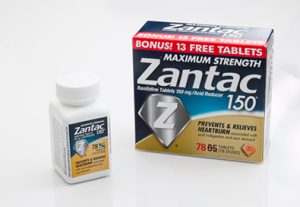 If you take Zantac or ranitidine, it is time to change your medication. On April 1st, the Food and Drug Administration (FDA) asked manufacturers to immediately withdraw all medication from the market. This is due to concerns it contains a chemical which could cause cancer.
If you take Zantac or ranitidine, it is time to change your medication. On April 1st, the Food and Drug Administration (FDA) asked manufacturers to immediately withdraw all medication from the market. This is due to concerns it contains a chemical which could cause cancer.
You will no longer be able to purchase the medication over the counter or refill existing prescriptions, according to the FDA. The agency has recommended alternative medications which you can discuss with your physician. While this announcement may come as a surprise during the COVID 19 outbreak, many had anticipated this move after the FDA’s initial warning last September and the subsequent recall of Zantac, the popular brand name medication, in October. Many other manufacturers have also issued voluntary recalls over the past six months.
The FDA announced testing showed ranitidine contained the contaminant N-Nitrosodimethylamine, or NDMA, which is a probable human carcinogen. The agency said the decision was made on the “best available science.” NDMA is a known environmental containment which is already present in our surroundings. It is found in water, meat, dairy and vegetables, but at low levels is “not be expected to lead to an increase in the risk of cancer,” according to the FDA.
When testing ranitidine, the FDA said it did not observe unacceptable levels in many drug samples. But ultimately, the agency decided the drug should not be available to consumers unless the quality can be assured.
Specifically, testing found the NDMA levels in some products increased in rising temperatures, which may be involved in distribution and a patient’s handling of the drug. And as the ranitidine product aged, so did NDMA levels.
This new FDA announcement will impact many people and present challenges. Patients can usually remember their daily medications. But Zantac is typically a short-term medication which is available in many ways, over-the-counter, by prescription or in a hospital. Because of this, many people may recall suffering from heartburn or a stomach ulcer, but may not remember which medication they took. Another challenge is the medication was sold under many brand names.
If you used Zantac or ranitidine, then experienced cancer or other illness or symptoms, you may want to learn more to guide you in your future medical care. You may also have the right to seek financial compensation to pay for your medical bills and other losses. At Breakstone, White & Gluck, our Boston product liability lawyers are now reviewing cases for patients who may be affected by Zantac and ranitidine injuries. For a free no-obligation legal consultation, call (800) 379-1244 or (617) 723-7676.
Here are a few points to remember:
Look for product names of ranitidine medications
Zantac was widely used. According to USA Today, before recall, there were 15 million prescriptions of Zantac annually. The manufacturer was Sanofi.
However, ranitidine was also sold under other names. It was manufactured by Dr. Reddy’s Laboratories Ltd., which manufactured ranitidine products sold by Dr. Reddy, Kroger and Walgreens. Brand names included American Health Packaging, Glenmark Pharmaceuticals, Precision Dose, Appco Pharma, Sandoz Inc. (a division of Novartis) and Northwind Pharmaceuticals.
Talk to your doctor about your ranitidine use
If you are taking a medication for heartburn or ulcers, carefully read the product labeling to see if it contains ranitidine.
If you are taking a ranitidine medication, stop and contact your primary care physician. The FDA recommends patients take an alternative heartburn medication, such as Pepcid (famotidine), Tagamet (cimetidine), Nexium (esomeprazole), Prevacid (lansoprazole) or Prilosec (omeprazole). Discuss these with your physician. There have been no NDMA impurities found with these products, according to the April 1st announcement.
You may be thinking you don’t want to reach out to your doctor during the COVID-19 emergency, but this type of preventative step is important. You may have other medical conditions or other medications which you need to consider. Your doctor can advise you on how to take your medications safely.
Take care to safely dispose the medication
Due to the COVID 19 outbreak, the FDA is advising consumers to follow the disposal directions on packaging and dispose of medications at home, rather than a drug take-back location in your community.
Zantac lawsuits have already been filed, with more expected
Patients have already filed Zantac lawsuits, alleging Sanofi, the manufacturer, failed to warn consumers that the medication contained NDMA and of potential risks. Our personal injury lawyers are advising and representing Massachusetts residents who may have been affected.
Free Legal Consultation – Breakstone, White & Gluck
With more than 100 years combined experience, Breakstone, White & Gluck represents those injured by defective products, including unsafe medication and defective medical devices in Massachusetts. If you have taken Zantac or another ranitidine medication subject to FDA action, you may have suffered illness and want to learn more about your legal rights. Contact our attorneys now.
For a free legal consultation, call our Boston product liability lawyers at (800) 379-1244 or (617) 723-7676. You can also send a message through our contact form.
COVID-19 Update for New and Existing Clients
Breakstone, White & Gluck is open. Here is our latest update on how we are serving clients during the COVID-19 crisis: www.bwglaw.com/covid-19.
Message from Breakstone, White & Gluck: COVID-19 Update
Free Legal Consultation: 800-379-1244
Main: 617-723-7676
During the Coronavirus (COVID-19) outbreak, we want to assure you that Breakstone, White & Gluck is committed to providing uninterrupted service to all of our clients. We will be limiting staff in our Boston office while state and federal advisories are in place. But our attorneys are available by phone and email to our clients. We will continue to provide free legal consultation and case review by phone.
Please call us at 617-723-7676 or toll-free at 800-379-1244. You can also contact us through our website, www.bwglaw.com.
Our Practice Areas:
- Personal Injury Law
- Medical Malpractice
- Wrongful Death
- Motor Vehicle Accidents
- Construction Site Accidents
- MBTA Accidents
- Gas Explosions
- Bicycle Accidents
- Dog Bites and Dog Attacks
- Truck Accidents
- Motorcycle Accidents
- Premises Liability Accidents
- Pedestrian Accidents
- Spinal Cord Injuries
- Train Accidents
- Product Liability
- Defective Medical Devices
- Brain Injuries
- Burn Injuries
- Head Injuries
- Bus Accidents
- Snow and Ice Accidents
- Escalator and Elevator Accidents
- Food Poisoning
- Swimming Pool Accidents
- Liquor Liability and Dram Shop
- Laser Hair Removal Injuries
- Chemical Exposure Accidents
Encouraging Boston Drivers to Look For Cyclists

Safety reminders for drivers as cyclists return to the road in Boston.
In Boston, many cyclists take a winter break. As this nears an end, drivers should get ready to commute alongside cyclists again. Everyone should be aware of the risks for bicycle accidents at intersections. These include right hook accidents, which occur when a driver fails to yield to a cyclist while turning right.
Drivers must remember that cyclists have the same rights and responsibilities as drivers. Here, we share a few safety tips for drivers from the National Highway Traffic Safety Administration (NHTSA):
- Obey the speed limit.
- Drive defensively. Cyclists may need to leave their lane for safety reasons and may not give you much notice.
- Yield to cyclists just as you would another motor vehicle.
- When turning right on a red light, check for cyclists to the right and behind you. Stop completely and look in both directions – left, right, left and behind.
- Provide cyclists with adequate space.
- Pass cyclists with care. Do not pass too closely and only do so if you would pass a motor vehicle in the same situation.
- Check before you pull out or back up in parking lots.
- Check for cyclists when at stop signs. Expect that a cyclist may come up behind you while you wait for your turn to go.
Driving Safely Near Bicyclists in Massachusetts
Gone are the days when drivers rarely saw a cyclist on the road. It’s critical for drivers to be informed about their responsibilities near cyclists, particularly in intersections, and the potential for bicycle crashes.
As a driver, if you are near a bicyclist, the best approach is to slow down and give them room. Do not take your eyes off the cyclist or the road. If you don’t see a cyclist, take the opportunity to look.
Leave the bicycle lane for cyclists – this is the law in Massachusetts and if you neglect to follow it, you could hit a cyclist, causing serious injury and confusing other drivers. And this could lead to domino-effect collisions with other vehicles, cyclists or pedestrians in the area.
Expect cyclists will be traveling in front of you, as well as behind you. In fact, they are more likely to be behind you, to the right (though they are allowed to travel in the center of the lane in Massachusetts if they need to). Checking your mirrors is essential, as is left-right-left and behind checking. This is true even after you park because cyclists could be riding by and by opening the door at the wrong time, you could cause a bicycle dooring injury.
Finally, remember cyclists may not be visible behind commercial trucks and other traffic. The cyclist may be out of your view, but just approaching the large vehicle behind you. If the vehicle behind you is obstructing your view, take an extra few seconds.
For more information, read our articles, “Facts About Bicycling Laws in Massachusetts,” or “Tips for Safe Bike Commuting in Boston.” You can also visit the MassBike website, which explains more about cyclist and motorist responsibilities or the NHTSA web page on bicycle safety.
Free Legal Consultation – Boston Bicycle Accident Attorneys
Breakstone, White & Gluck has extensive experience handling personal injury cases involving bicycle injuries in Boston and across Massachusetts. After a bicycle accident, our attorneys are here to provide clients with thorough investigation and aggressive representation. We understand the stakes are high when you have been injured on a bicycle because medical bills can mount quickly and no one expects to suffer an injury. But we have attorneys who are experienced as lawyers and as cyclists. We are committed to partnering with our clients to obtain the best financial result in every case.
For a free legal consultation, contact Breakstone, White & Gluck at 800-379-1244 or 617-723-7676. You can also use our contact form.


